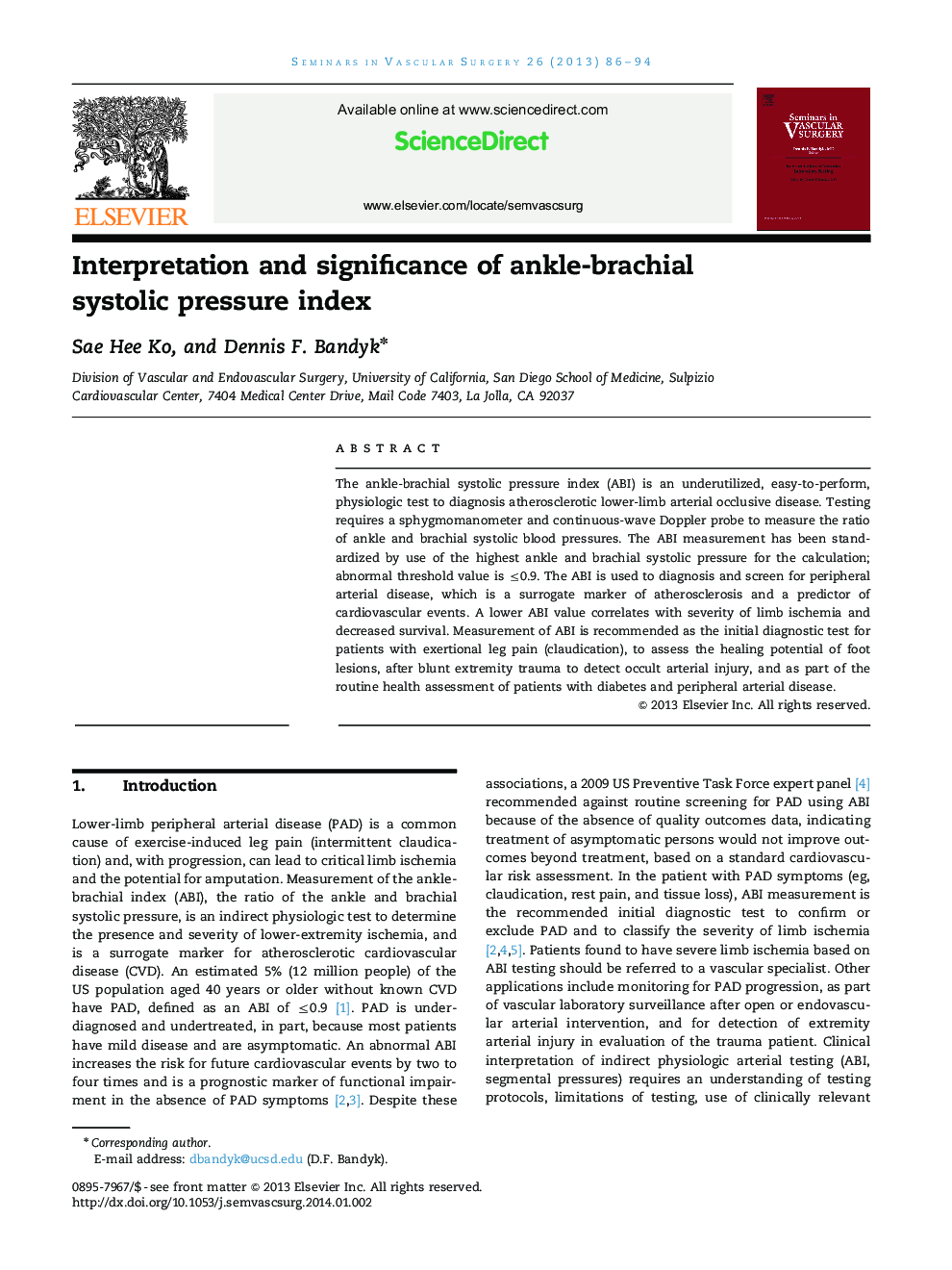| Article ID | Journal | Published Year | Pages | File Type |
|---|---|---|---|---|
| 3026153 | Seminars in Vascular Surgery | 2013 | 9 Pages |
The ankle-brachial systolic pressure index (ABI) is an underutilized, easy-to-perform, physiologic test to diagnosis atherosclerotic lower-limb arterial occlusive disease. Testing requires a sphygmomanometer and continuous-wave Doppler probe to measure the ratio of ankle and brachial systolic blood pressures. The ABI measurement has been standardized by use of the highest ankle and brachial systolic pressure for the calculation; abnormal threshold value is ≤0.9. The ABI is used to diagnosis and screen for peripheral arterial disease, which is a surrogate marker of atherosclerosis and a predictor of cardiovascular events. A lower ABI value correlates with severity of limb ischemia and decreased survival. Measurement of ABI is recommended as the initial diagnostic test for patients with exertional leg pain (claudication), to assess the healing potential of foot lesions, after blunt extremity trauma to detect occult arterial injury, and as part of the routine health assessment of patients with diabetes and peripheral arterial disease.
